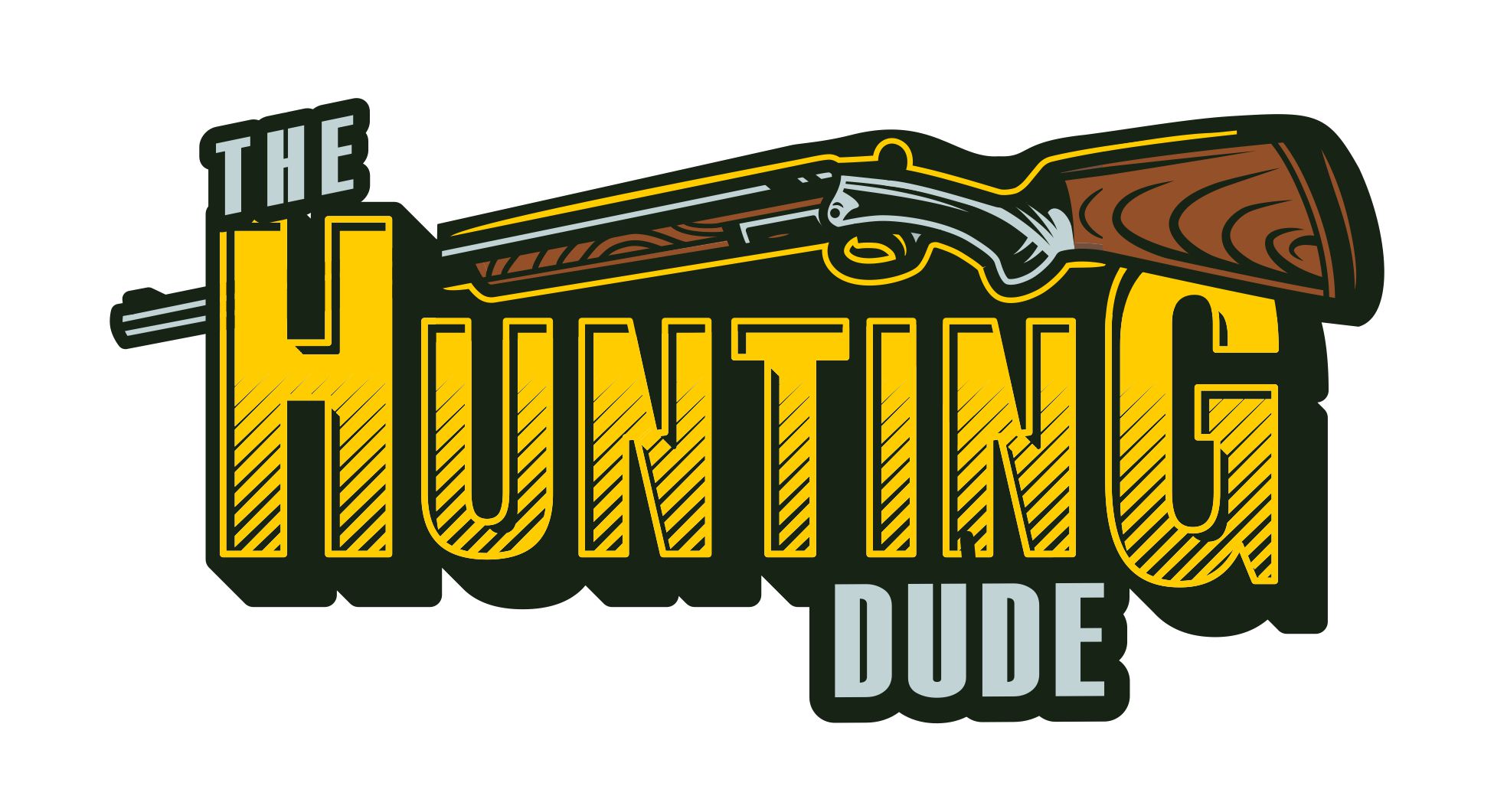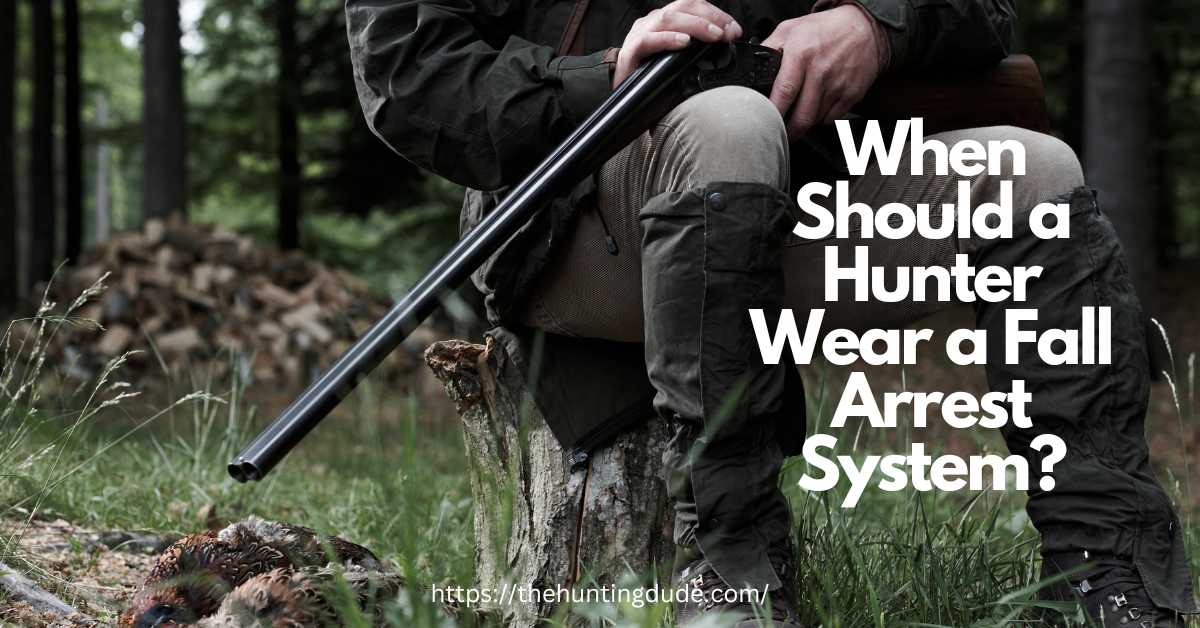If you are a newbie in hunting, you must be curious about when a hunter should wear a fall arrest system. Don’t worry, here are the details.
In the woods, hunting from a tree stand is an effective strategy as animals, mostly deer, have no idea that a predator would be aiming at them from above.
Hunters often use tree stands to aim at their prey, but all hunting stories do not end up in a reward; some may entice life-threatening situations. For example, a slipped step, broken branches, or disbalance can create chaos in the wild and put the hunter’s life in danger.
When Should a Hunter Wear a Fall Arrest System? Safety Guidelines
This article will tell you about a fall arrest system, how it works, why a hunter must use it, and when it should be used.
Let’s dig in.
What is a Fall Arrest System?
A fall arrest system, or FAS, is a system specifically designed to capture a person upon falling. It has three main components; a body harness, anchorage, and connecting hooks. In addition, a fall arrest system has other components, including a lanyard, lifeline, and deceleration device.
The fall arrest system guarantees safety from elevated positions, such as trees or mountains, while hunting.
Why Must a Hunter Use a Fall Arrest System?
A hunter must employ a fall arrest system for safety in the case of a fall while hunting. FAS can help avoid fatal crashes or major injuries following a height fall. Additionally, it can offer a safe platform for the hunter to stand on while firing or reloading a firearm.
The system often includes a full-body harness, a lanyard, a carabiner, and an anchoring point. The fall arrest system can both help a hunter avoid falling and offer the required protection if they do.
When Should a Hunter Wear a Fall Arrest System?
Anytime a hunter faces a risk of falling from a height, they should wear a fall arrest system. This applies to any time they are climbing a building, perched in a tree, or on a roof.
In other words, if you are hunting in a scenario that might be dangerous, you must wear a fall arrest system. This applies to situations where falling might be hazardous, such as when you are out hunting or crossing a stream.
Wearing the fall arrest device will help you to avoid any possible falls or slips that might result in harm or even death.
How Does a Personal Fall Arrest System Works?
If you have seen the show “Man versus Wild,” you must have a vague idea about how a fall protection system works. Or else, take it easy; we are here to describe its details.
The personal fall arrest system secures a person from falling while working at an elevated position. It minimizes the risk of injury by securing you with a full-body harness. If you are hunting from a tree or any high position, wearing fall protection equipment would be a smart choice.
Before describing the fall arrest system’s working principle, you must know its main components.
Here are the main parts of FAS:
1. Tether: This FAS part connects the lineman’s belt or tree strap tether to the full-body harness. It has shock-absorbing characteristics.
2. Body Harness: This safety vest supports the body extremely well when the body is suspended.
3. Suspension Relief Strap: This part offers a place to stand if a hunter stumbles.
The full-body harness supports the thighs and shoulders. One enters it to put on the harness, pulls the top half like a coat, and fits the sides on their front. Upon a fall, the suspension relief strap clips into the harness.
Thus it saves the person by enabling the individual to put foot in the loop and get up. The hunter’s actual fall would be shorter since the lineman’s belt is fastened to the tree rope above him. The distance assists devices aid an individual in coming slowly toward the ground.
Caution: “Hunters can suffer from compartment syndrome if left hanging or staying still for long time while waiting for help in the wild.”
How to Advance Your Fall Arrest System?
Anything can happen in the wild; you must be vigilant and keep as much safety equipment as possible. To advance your fall arrest system, you need some additional gear, like;
- Climbing Harness: A climbing harness or lineman’s belt balances climbers by giving them support as it wraps around a tree. It should always be overhead without any obstruction.
- The Prusik Knot: It is a significant gear in climbing because it ensures safety as you climb. In the event of a fall, the Prusik knot tightens around itself to cushion your fall.
- Carabiner: These attach lineman’s belt to tree. It should be durable, so you must not compromise on its quality while purchasing.
- Safety Rope: It gives you an additional point of contact with the tree for climbing.
- Descent Support Tool: The hunter may be gently lowered to the ground using these little devices attached to the FAS and the tree.
Fall protection training is a must before attempting high climbing practices. In simpler words, you can’t set up a fall arrest system just by reading its instructional manual.
Smart Tip: Always pick industry-standard FAS and practice setting it up before going for a hunt in the wild. Last-minute hassle would put you in a threatening situation. That’s why you must be prepared beforehand.
Safety Guidelines
- Before setting up a FAS, ensure that your personal fall arrest system’s parts are in good working condition, undamaged, and correctly installed before each usage.
- When setting up your fall arrest system, always utilize the right parts.
- Make sure your anchor point is permanently fastened to a sturdy object that can bear at least 5,000 pounds.
- Before moving to the next step, confirm that your fall arrest system is fastened and attached.
- When utilizing a fall arrest device, always wear a complete body harness that has been approved.
- Verify that the fall arrest system’s components are checked for their intended application.
- Ensure that the fall arrest system is long enough to reach the ground in the case of a fall.
- Only use a fall arrest system for authorized activities.
- Verify that the fall arrest system complies with all relevant guidelines.
- When employing a fall arrest device, always adhere to all safety recommendations and manufacturer standards.
Fell While Hunting? Here is What to Do Immediately!
If you fall while hunting, you should assess the situation to ensure you are not injured. If you are not injured, you should get up and continue hunting. In case of muscle tear or injury, you must seek medical help without delay.
If you are using a fall arrest system, you should activate the system to stop you from falling further and assess the situation. If the system does not stop you from falling, you should call for medical help immediately.
Frequently Asked Questions
1. How to set up a fall arrest system?
- Choose the right fall arrest system for the job. Consider the type of work, the environment, and the risks when selecting the best system.
- Set up anchors for fall protection. It is necessary to firmly fasten anchors to the building’s framework or another solid surface.
- Verify that the system’s components are all correctly installed. Check each component to ensure it is connected properly and that the system is securely fastened to the building.
- Run a validation test. Perform a weight test by suspending a weight from the system for two minutes.
- Get yourself trained. You should have proper training on using the system safely, including connecting to and disconnecting the anchor points.
- Conduct routine inspections. To ensure the system is in good shape and all its parts are operating correctly, regularly inspect it.
2. What is PPE used in a fall arrest system?
A fall arrest system uses a full body harness, lanyards, shock-absorbing safety lines, and anchor points as personal protective equipment (PPE). The full-body harness needs to be secure, comfortable to wear, and strong enough to resist the forces of a fall.
The lanyards ought to be strong and capable of absorbing the force of a fall. The lanyards should be long enough for the user to reach the safety line before crashing to the ground. The safety lines should be firmly fastened to the anchor points.
3. What are the major components of personal fall protection systems?
The major components of personal fall protection systems are:
- Harness: A full-body harness is designed to provide support and comfort while keeping the user safe from falls.
- Connectors: Connectors attach the harness to the anchor point or deceleration device.
- Anchor Point: It prevents a fall by giving support to the user.
- Deceleration Device: A deceleration device is designed to slow down the user’s fall and prevent serious injury.
- Lanyard: A lanyard is a rope or webbing attachment that connects the user’s harness to the anchor point or deceleration device.
- Self-Retracting Lifeline: A self-retracting lifeline is a device that automatically retracts the user’s lanyard after a fall is detected.
- Rescue and Recovery: Rescue and recovery systems should be in place in an emergency.
4. What is the difference between fall arrest and fall restraint?
Fall restraint is a system that prevents a person from reaching a fall danger, often using a safety harness and lanyard tied to an anchor point. Fall arrest is a system that stops a person from falling, typically using a safety harness and lanyard.
Fall restraint is employed before a person has fallen. In contrast, fall arrest is used when they have already begun to fall.
5. How costly is the fall arrest system in America?
The price of a fall arrest system in the United States can range from a fifty to five thousand dollars. A complete system, which includes anchor points, safety wire, and other components, may start from $1,000.
In addition, personal equipment, including a harness, lanyard, and other safety gear, can cost between $100 and $300.
Conclusion
Most hunting tree stands are not designed to bear the load of an adult person. That’s why hunters must use a fall arrest system while aiming at their target from height. However, it is very important to select the appropriate and approved FAS to be more safe in the wild.
Setting up a FAS is a simple yet complicated process. All its components are easy to attach, but you need to carefully connect the FAS parts to ensure their proper working.
The fall arrest system connects the hunter to support with the help of ropes so that upon a fall or slip, the equipment arrests the individual and safeguards them from falling

